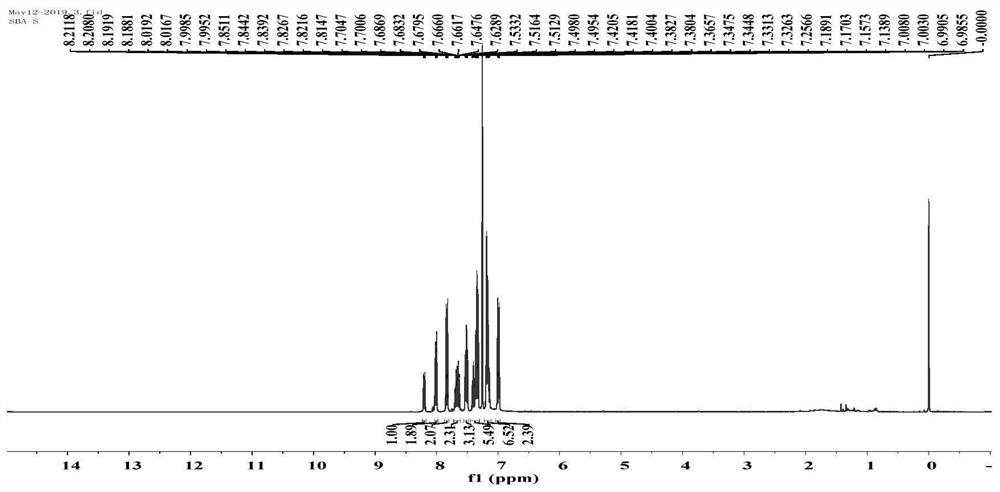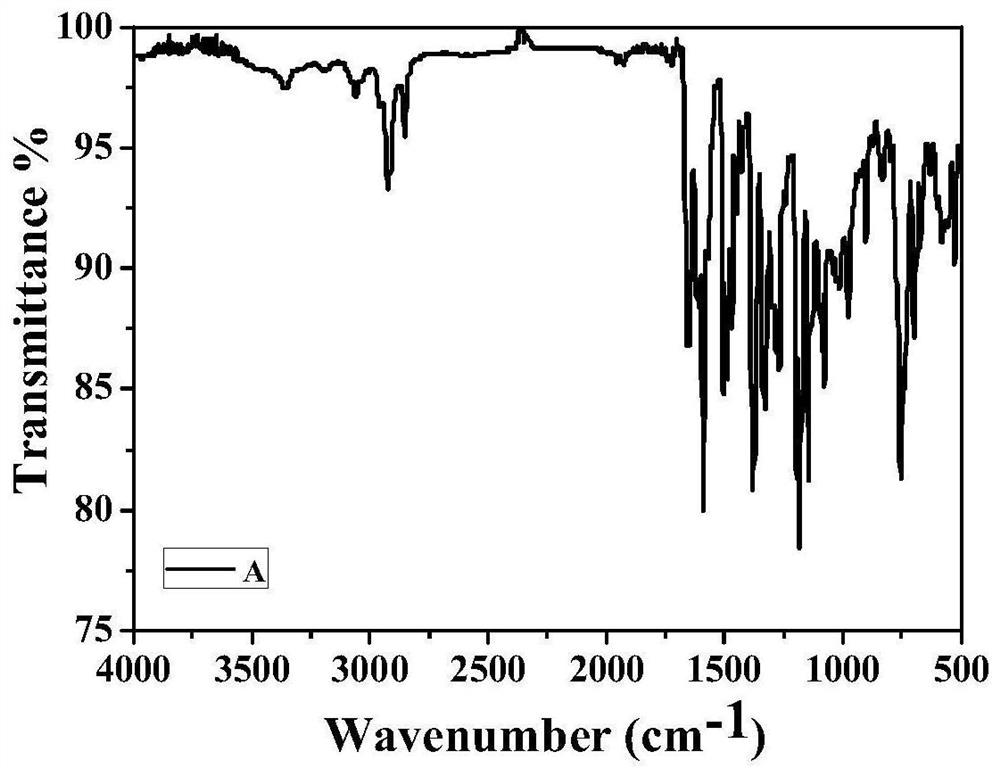Low-toxicity flavonol sulfonate photoinitiator, visible light initiation system and application
A technology of flavonol sulfonate and photoinitiator, applied in organic chemistry and other directions, can solve the problems of low photocuring efficiency, few photoinitiators, and few photoinitiators, etc., and achieves simple molecular structure, strong light absorption ability, The effect of a long photosensitive band
- Summary
- Abstract
- Description
- Claims
- Application Information
AI Technical Summary
Problems solved by technology
Method used
Image
Examples
Embodiment 1
[0053] Synthesis of Initiator 2-(4-(Diphenylamino)phenyl)-4-oxo-4H-benzofuran-3-ylbenzenesulfonate
[0054] The synthesis process is shown in the following formula:
[0055]
[0056] 38.6 mL of DMF, 37.3 mL of phosphorus oxychloride, and 24.8 g of triphenylamine were added to a 500-ml single-neck bottle, dissolved in 1,2-dichloroethane, and heated to 80°C. TLC detected the disappearance of the starting material, poured the reaction solution into 100 mL of ice water, adjusted the pH value to neutrality with sodium hydroxide, extracted with dichloromethane several times, and concentrated to obtain 4-(diphenylamino)benzaldehyde.
[0057] In a 500ml round-bottomed flask, add 12g of sodium hydroxide, dissolve in 30ml of water, reduce the temperature to room temperature, then add 20ml of ethanol, weigh 4.86g of 2-hydroxyacetophenone and 9.78g of 4-(diphenylamino)benzaldehyde and mix, Dissolve and dilute with 70ml ethanol, add half of the mixed solution dropwise to the round-bott...
Embodiment 2
[0065] A visible light initiation system for initiating free radical curing and its application:
[0066] According to 0.125wt% photoinitiator A, the visible light initiation system is prepared, and the visible light initiation system is added to the free radical polymerizable monomer TPGDA based on the weight of the radical polymerizable monomer as 100%, and the transparent and clear photocuring reaction solution is obtained by fully mixing.
[0067] Add the prepared photocuring system to a rubber ring mold with a thickness of 1.0mm and a diameter of 7.0mm, fix it with two clean glass sheets, and irradiate it with a 405nm and 460nm laser diode to ensure the distance between the sample and the excitation light source. The light source is 30W LED lights: purple LED (JH-100B14G30-Z1C, 405nm), blue LED (JH-100B14G30-Z1C, 460nm) (LEDGUHON / Juhong Optoelectronics). In order to ensure the reliability of the experimental results, three NIR tests were performed on each photocurable sys...
Embodiment 3
[0069] A visible light initiation system for initiating free radical curing and its application:
[0070] According to 0.125wt% of photoinitiator A and 3.0wt% of triethanolamine, the visible light initiation system was prepared. Based on the weight of the free radical polymerizable monomer as 100%, the visible light initiation system was added to the free radical polymerizable monomer TPGDA, and fully mixed to obtain a transparent Clear photocurable reaction solution.
[0071] Add the prepared photocuring system to a rubber ring mold with a thickness of 1.0mm and a diameter of 7.0mm, fix it with two clean glass sheets, and irradiate it with a 405nm and 460nm laser diode to ensure the distance between the sample and the excitation light source. The light source is 30W LED lights: purple LED (JH-100B14G30-Z1C, 405nm), blue LED (JH-100B14G30-Z1C, 460nm) (LEDGUHON / Juhong Optoelectronics). In order to ensure the reliability of the experimental results, three NIR tests were perform...
PUM
| Property | Measurement | Unit |
|---|---|---|
| diameter | aaaaa | aaaaa |
Abstract
Description
Claims
Application Information
 Login to View More
Login to View More - R&D
- Intellectual Property
- Life Sciences
- Materials
- Tech Scout
- Unparalleled Data Quality
- Higher Quality Content
- 60% Fewer Hallucinations
Browse by: Latest US Patents, China's latest patents, Technical Efficacy Thesaurus, Application Domain, Technology Topic, Popular Technical Reports.
© 2025 PatSnap. All rights reserved.Legal|Privacy policy|Modern Slavery Act Transparency Statement|Sitemap|About US| Contact US: help@patsnap.com



